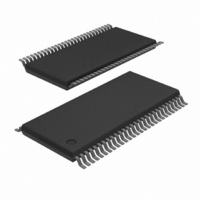PCF8576DT/2,118 NXP Semiconductors, PCF8576DT/2,118 Datasheet - Page 19

PCF8576DT/2,118
Manufacturer Part Number
PCF8576DT/2,118
Description
IC LCD DRIVER 40/160SEG 56TSSOP
Manufacturer
NXP Semiconductors
Datasheet
1.PCF8576DT2118.pdf
(50 pages)
Specifications of PCF8576DT/2,118
Package / Case
56-TSSOP
Display Type
LCD
Configuration
40 Segment
Interface
I²C
Current - Supply
24µA
Voltage - Supply
1.8 V ~ 5.5 V
Operating Temperature
-40°C ~ 85°C
Mounting Type
Surface Mount
Number Of Digits
20
Number Of Segments
160
Maximum Clock Frequency
400 KHz
Operating Supply Voltage
1.8 V to 5.5 V
Maximum Power Dissipation
400 mW
Maximum Operating Temperature
+ 85 C
Maximum Supply Current
50 mA
Minimum Operating Temperature
- 40 C
Lead Free Status / RoHS Status
Lead free / RoHS Compliant
For Use With
568-4703 - DEMO BOARD LCD GRAPHIC DRIVER
Digits Or Characters
-
Lead Free Status / Rohs Status
Lead free / RoHS Compliant
Other names
568-3558-2
935276166118
PCF8576DT/2-T
935276166118
PCF8576DT/2-T
NXP Semiconductors
PCF8576D
Product data sheet
7.12 Subaddress counter
7.11 Data pointer
The following applies to
The addressing mechanism for the display RAM is realized using the data pointer.
This allows the loading of an individual display data byte, or a series of display data bytes,
into any location of the display RAM. The sequence commences with the initialization of
the data pointer by the load-data-pointer command (see
Following this command, an arriving data byte is stored at the display RAM address
indicated by the data pointer. The filling order is shown in
After each byte is stored, the content of the data pointer is automatically incremented by a
value dependent on the selected LCD drive mode:
After each byte is stored, the contents of the data pointer is automatically incremented by
a value dependent on the selected LCD drive mode:
If an I
The data pointer should be re-written prior to further RAM accesses.
The storage of display data is determined by the contents of the subaddress counter.
Storage is allowed to take place only when the contents of the subaddress counter match
with the hardware subaddress applied to A0, A1 and A2. The subaddress counter value is
defined by the device-select command (see
subaddress counter and the hardware subaddress do not match then data storage is
inhibited but the data pointer is incremented as if data storage had taken place. The
subaddress counter is also incremented when the data pointer overflows.
•
•
•
•
•
•
•
•
In the static drive mode, the eight transmitted data bits are placed in row 0 of eight
successive 4-bit RAM words.
In the 1:2 multiplex mode, the eight transmitted data bits are placed in pairs into
row 0 and 1 of four successive 4-bit RAM words.
In the 1:3 multiplex mode, the eight bits are placed in triples into row 0, 1 and 2 to
three successive 4-bit RAM words, with bit 3 of the third address left unchanged. It is
not recommended to use this bit in a display because of the difficult addressing. This
last bit may, if necessary, be controlled by an additional transfer to this address but
care should be taken to avoid overwriting adjacent data because always full bytes are
transmitted.
In the 1:4 multiplex mode, the eight transmitted data bits are placed in quadruples into
row 0, 1, 2 and 3 of two successive 4-bit RAM words.
In static drive mode by eight
In 1:2 multiplex drive mode by four
In 1:3 multiplex drive mode by three
In 1:4 multiplex drive mode by two
2
C-bus data access is terminated early then the state of the data pointer is unknown.
All information provided in this document is subject to legal disclaimers.
Rev. 10 — 14 February 2011
Figure
12:
Universal LCD driver for low multiplex rates
Section
7.17). If the contents of the
Section
Figure
7.17).
12.
PCF8576D
© NXP B.V. 2011. All rights reserved.
19 of 50















